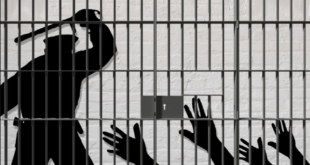- Recently, a group of experts under the National Human Rights Commission (NHRC) has expressed concerns over the slow pace of reforms in the criminal justice system to ensure speedy justice.
- NHRC of India is an independent statutory body established on 12th October, 1993 as per provisions of Protection of Human Rights Act, 1993, later amended in 2006.
Important points:
- Criminal Justice System refers to the agencies of government charged with enforcing law, adjudicating crime, and correcting criminal conduct.
- It is essentially an instrument of social control.
- Criminal justice system reforms broadly comprises three sets of reforms viz. Judicial reforms, Prison reforms, Police reforms
Objective:
- To prevent the occurrence of crime.
- To punish the transgressors and the criminals.
- To rehabilitate the transgressors and the criminals.
- To compensate the victims as far as possible.
- To maintain law and order in the society.
- To deter offenders from committing any criminal act in the future.
Legal Framework:
- The Indian Penal Code (IPC) is the official criminal code of India drafted in 1860 on the recommendations of the first law commission of India established in 1834 under the Charter Act of 1833 under the Chairmanship of Lord Thomas Babington Macaulay.
- The Code of Criminal Procedure (CrPC) is the main legislation on procedure for administration of substantive criminal law in India. It was enacted in 1973 and came into force on 1st April 1974.
Issues:
- There were about 4.4 crore pending cases in the Supreme Court, High Courts and district courts.
- India has one of the world’s largest number of undertrial prisoners. This delay in disposal of cases is leading to human rights violations of the undertrials and convicts.
- Despite the Supreme Court’s directions on police reforms, there had been hardly any changes on the ground.
- Corruption, huge workload and accountability of police is a major hurdle in speedy and transparent delivery of justice.
- The codification of criminal laws in India was done during the British rule, which more or less remains the same even in the 21st century.
Malimath Committee (2000) Recommendations
- The Committee suggested that a Schedule to the Code be brought out in all regional languages so that the accused knows his/her rights, as well as how to enforce them and whom to approach when there is a denial of those rights.
- The Committee suggested hiving off the investigation wing from Law and Order.
- The report pointed out the judge-population ratio in India is 10.5 per million population as against 50 judges per million population in many parts of the world.
- It suggested the increase in strength of judges and courts.
- It suggested separate witness protection law so that safety and security of witnesses can be ensured and they can be treated with dignity.
- It recommended reducing the vacations of court on account of long pendency of cases.
SOURCE: THE HINDU,THE ECONOMIC TIMES,MINT
 Chinmaya IAS Academy – Current Affairs Chinmaya IAS Academy – Current Affairs
Chinmaya IAS Academy – Current Affairs Chinmaya IAS Academy – Current Affairs



